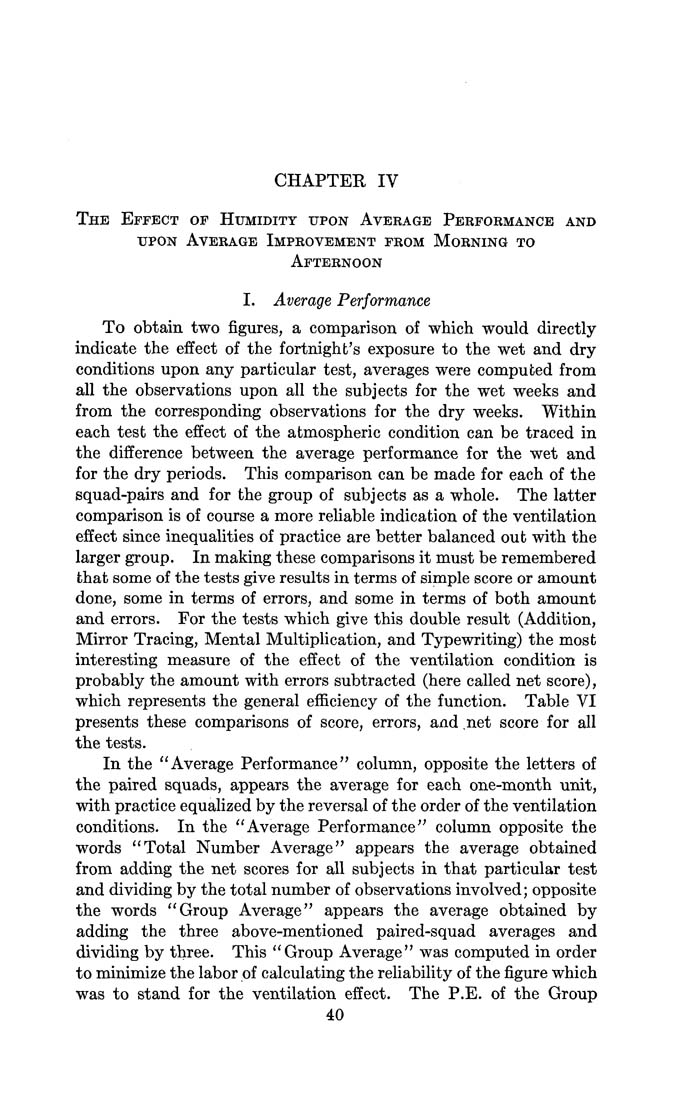CHAPTER IV
The Effect of Humidity upon Average Performance and
UPON Average Improvement from Morning to
Afternoon
I. Average Performance
To obtain two figures, a comparison of which would directly
indicate the effect of the fortnight's exposure to the wet and dry
conditions upon any particular test, averages were computed from
all the observations upon all the subjects for the wet weeks and
from the corresponding observations for the dry weeks. Within
each test the effect of the atmospheric condition can be traced in
the difference between the average performance for the wet and
for the dry periods. This comparison can be made for each of the
squad-pairs and for the group of subjects as a whole. The latter
comparison is of course a more rehable indication of the ventilation
effect since inequalities of practice are better balanced out with the
larger group. In making these comparisons it must be remembered
that some of the tests give results in terms of simple score or amount
done, some in terms of errors, and some in terms of both amount
and errors. For the tests which give this double result (Addition,
Mirror Tracing, Mental Multiplication, and Typewriting) the most
interesting measure of the effect of the ventilation condition is
probably the amount with errors subtracted (here called net score),
which represents the general efficiency of the function. Table VI
presents these comparisons of score, errors, and.net score for all
the tests.
In the "Average Performance" column, opposite the letters of
the paired squads, appears the average for each one-month unit,
with practice equalized by the reversal of the order of the ventilation
conditions. In the "Average Performance" column opposite the
words "Total Number Average" appears the average obtained
from adding the net scores for all subjects in that particular test
and dividing by the total number of observations involved; opposite
the words "Group Average" appears the average obtained by
adding the three above-mentioned paired-squad averages and
dividing by three. This "Group Average" was computed in order
to minimize the labor of calculating the reliability of the figure which
was to stand for the ventilation effect. The P.E. of the Group
40
|








